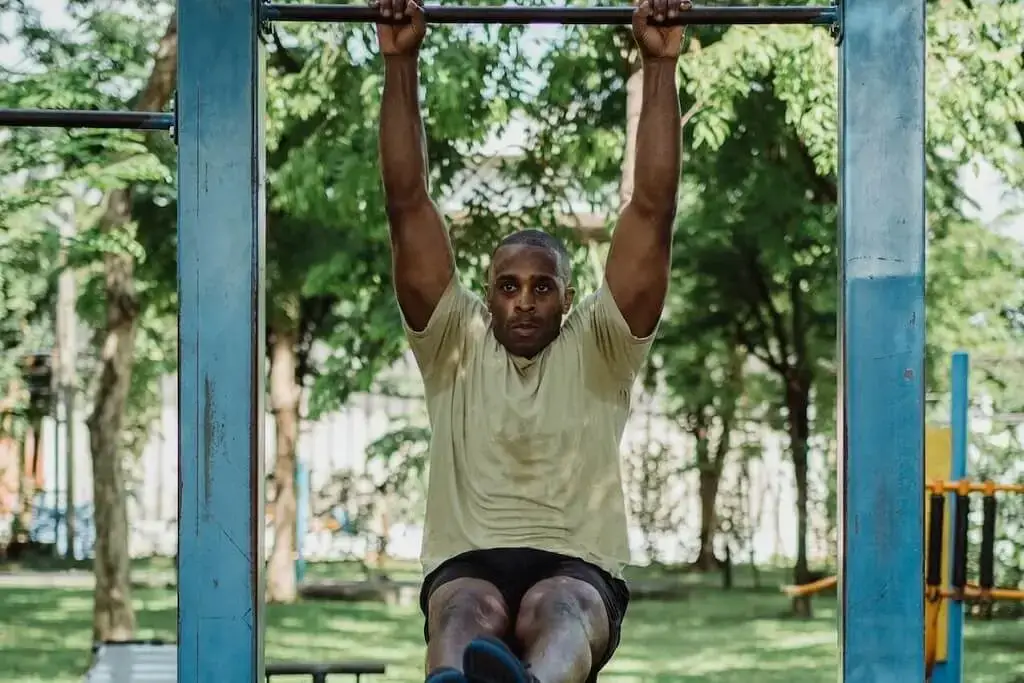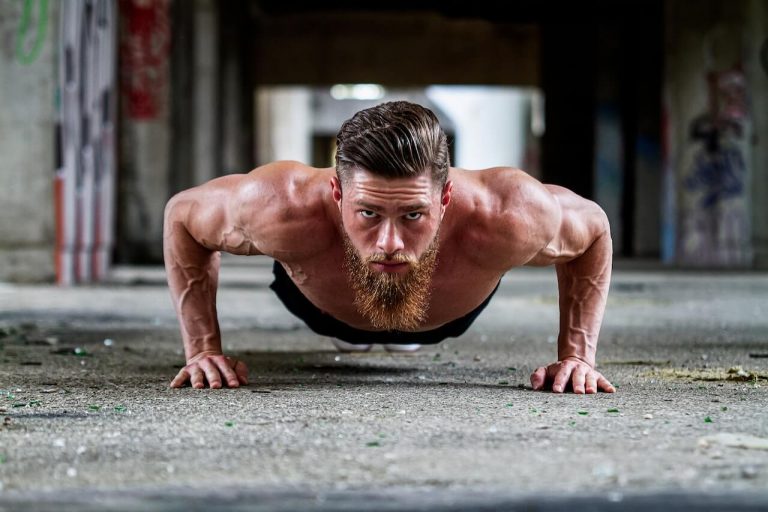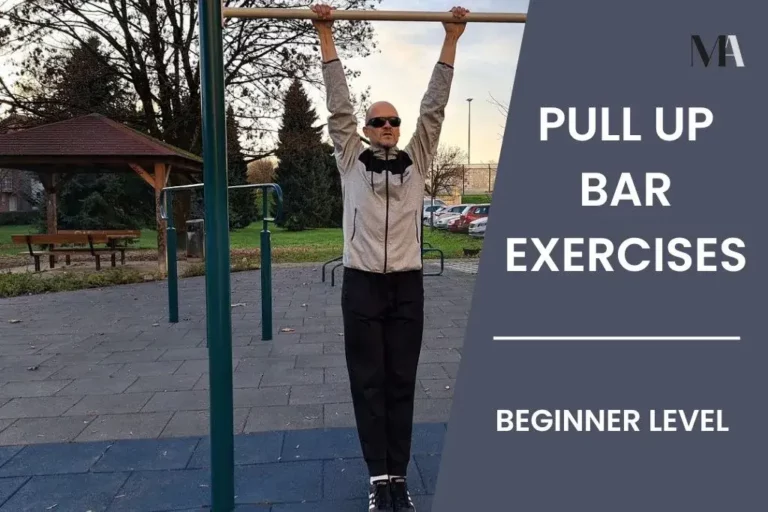Calisthenics Leg Workout For Strong Legs And Core
Calisthenics leg workout will help you build strength and size of your legs. This workout is meant to be used as a part of a push / pull / legs split.
Pull and push workouts are easy to understand. On a push day, you will be doing pushing exercises. On a pull day, you will be doing pulling exercises.
Calisthenics leg workout will work your legs. No surprise there. But, you will also be working on your core. More precisely, your abs and lower back.
You may also want to include face pulls in your leg day workouts. You will work your rear delts in pull training. But if you want to work on them more, you can add them to your calisthenics leg workout.
Calisthenics Leg Workout: Muscles Worked
So, in a calisthenics leg workout, you will be working your leg muscles. You will also be working your abs and lower back.
In some cases, you may want to also add face pulls to your calisthenics leg workouts. When you do, you will also be working your rear delts.
Primary muscles targeted:
- Quads
- Hamstrings
- Calves
- Glutes
- Abs
- Lower back
If you include face pulls:
- Rear delts
Calisthenics Leg Workout: Equipment
You can do a calisthenics leg workout without any equipment. But you will have more options with the use of equipment. It will depend on what equipment you have access to. It will also depend on the exercises you want to do.
If you are doing your legs and core muscles, you will need no or minimal equipment. If you add face pulls, you will need a resistance band and somewhere to anchor this band. It can be a pull up bar or door.
Equipment:
- Pull up bar
- Resistance band
- Exercise mat (optional)
Calisthenics Leg Workout: Sets And Reps
To create a calisthenics leg workout that will perfectly fit your fitness level, you may want to modify this workout example. If you want to work both on strength and hypertrophy you would want to keep a rep range between 5-8 reps per set.
If you are looking for strength gains only, you would want to keep your reps low. Up to 5 reps. If you are looking for hypertrophy only, you would want easier exercises with 8-15 reps per set.
Remember that those reps should be of high quality. This means you should be barely able to pull off the last two reps in the last set. Remember to keep your muscles working during the entire movement.
- Quads and glutes
- 3×5-8 lunges
- Abs
- 3×5-8 hanging leg raises
- Calves
- 3×5-8 calves raise
- Lower back
- 3×5-8 superman lifts
- Hamstrings and glutes
- 3×5-8 single leg glute bridges
- Rear delts
- 3×5-8 face pulls
You can easily modify this workout to suit your level of skill. You can find exercises with higher and lower difficulty by checking one of the progressions.
If you are looking for leg skills, you can check pistol squat progression. If you are looking for exercises targeting your abs, you can check the front lever progression. For lower back moves, check out the back lever progression.
When you are on an intermediate or advanced level you may also want to increase the total workout volume. You can add another round or even two more rounds to the workout above.
This means you will do the first round using exercises with reps between 5-8. After that, you add another round using the same exercises. Alternatively, you can do this round with a higher rep range using easier exercises.
Lunges

Lunges are the first exercise where you are loading your legs unevenly. This makes it harder than regular squats.
Lunges muscles worked:
Primary
- Quads
- Glutes
Secondary
- Hamstrings
- Calves
Equipment:
- Exercise mat (optional)
How to perform lunges
Positioning:
Spread your legs wide one in front of the other. Your front leg is your working leg. It will carry the most load during the move. Your back leg is a non-working leg.
Downward movement:
Bend your working leg slowly. Bend a leg at your knee and lower your butt down. Keep on going down until your non-working leg knee touches the ground. You should touch the ground lightly. Don’t rest on your knee.
Upward movement:
To raise back up, extend your working leg slowly. Go up until you are back in the starting position.
Hanging Leg Raises

Hanging leg raises will mostly work your hip flexors. Your hip flexors will be the primary movers until your legs are parallel to the ground.
Your abs will start working only if you raise your butt up a bit at the end of the move. If you don’t focus on raising your butt up a bit you will not engage your abs.
Hanging leg raises muscles worked:
- Abs
- Hip flexors
Equipment:
- Pull up bar
How to perform hanging leg raises
Positioning:
Grab a pull up bar with your hands. Your palms should be facing away from you at about shoulder width, or a bit wider. Your legs should be hanging freely without touching the ground.
Upward movement:
Raise your legs up in front of you. Raise your legs until they are parallel to the ground. After that move your butt slightly forward and up. This small move is crucial for engaging your abs.
Keep your legs straight during the movement. Try to keep your body calm as much as possible.
Downward movement:
Lower down your legs slowly and with control. Keep on lowering your legs until you are hanging straight.
Calf Raises

Although you were working your calves in lunges, they were not the primary movers. Calf raises will target calves directly.
Calf raises muscles worked:
- Calves
Equipment:
- None
How to perform calf raises
Positioning:
Stand with your legs straight. Your legs should be positioned at about hip width.
Upward movement:
Raise up by extending your ankles. You should raise your heels up from the ground. Raise up as much as you can.
Downward movement:
Slowly lower your heels down. Keep on lowering your heels until they are back on the ground.
Superman Lifts

Your abs are the front portion of your core muscles. Your lower back muscles are the back portion of your core muscles.
When you want to improve the strength of your core, you have to work both the front and back.
Superman lifts will target your lower back. This will help you build a balanced core strength.
Superman lifts muscles worked:
Primary
- Lower back
Secondary
- Hamstrings
- Glutes
- Abs
Equipment:
- Exercise mat (optional)
How to perform superman lifts
Positioning:
Lay flat on your belly. Keep your legs and arms straight. Your arms should be extended in front of you.
Upward movement:
Raise your arms and your legs up in the air. Lift them off the ground at the same time. Keep your entire body rigid. Your body should be arched and only your belly should be on the ground.
Downward movement:
Slowly lower your legs and arms back to the floor. Repeat for reps.
Single Leg Glute Bridges
Single leg glute bridges are used to develop your leg muscles. It’s great for your glutes, hamstrings, and lower back muscles.
Single leg glute bridges muscles worked:
Primary
- Gluteus
Secondary
- Hamstrings
- Lower back
- Quads
- Hip flexors
- Adductors
Equipment:
- Exercise mat (optional)
How to perform single leg glute bridges
Positioning:
Lay down on your back with your legs straight. Put your arms next to your sides. Place your palms down. Bend one of your knees. The leg with a bent knee will be your working leg.
Upward movement:
Push against the ground with your working leg. Raise up your butt, your back, and the other leg off the ground.
Keep on raising up until your body forms a straight line from your working leg knee up to your shoulders. Your non-working leg will be raised up in the air and straight.
Downward movement:
Lower down slowly and with control. Lower down until you are back in the starting position. Switch legs and do the same movement.
Face Pulls
This exercise is optional in the leg day workout. Face pulls will help you work your rear delts. That’s the back part of your shoulder muscles.
Band face pull muscles worked:
- Rear delts
- Traps (mid and lower)
- External shoulder rotators
Equipment:
- Resistance band
- Pull up bar
How to perform face pulls
Positioning:
Stand with your legs straight. Your legs should be firmly on the ground at around hip width. If you feel like losing your balance, you can position your legs one in front of the other. This will help you be more stable.
You should face towards where your band is tied to a bar. Grab a band with your hands and your thumbs facing backward.
Backward movement:
Pull the band back towards you. Lead with your elbows and follow with your hands. Pull as far back as you can.
When you can’t pull further backward with your elbows, try rotating your shoulders. If you can your hands would ideally go further back than your elbows.
You will be limited with how far you can rotate your shoulder.
Forward movement:
To go back to the starting position, slowly release the tension of the band. To release the bend tension let your hands and elbows move back forward.
Slowly release the band. Don’t let the band snap back fast.







